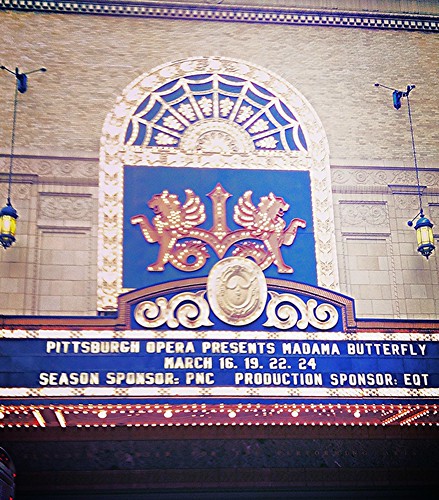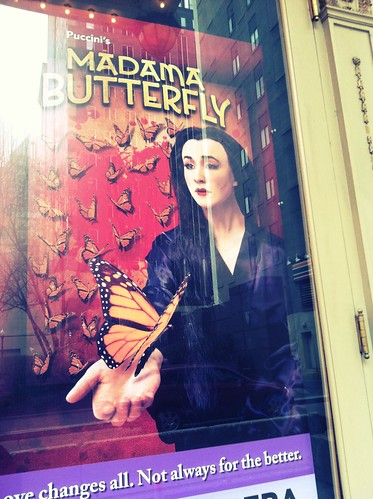"Madama Butterfly" is the story of a young Japanese woman, whose name is Cio-Cio San, but who is affectionately called Butterfly. Butterfly has fallen in love with an American Naval officer, B.F. Pinkerton. The marriage broker has arranged a marriage between the two. To Butterfly, this marriage is a new beginning; she flees from her past as a geisha and embraces a new identity as a wife, an American, and a Christian. As she rejects her culture and her religion, her family, in turn, rejects her. But she fears not, for she has love. However, Pinkerton's view of the marriage is not so steadfast; he sees this as a temporary folly, to sate his desire, until the time when he can have a real marriage to an American wife.
Pinkerton leaves Butterfly, and three years pass. Butterfly is now poor, and has no family support. Her only supporter is Suzuki, one of the servants. In Japan, marital abandonment is tantamount to divorce, but Butterfly refuses to lose hope. She is certain her husband will return. Butterfly is visited my the American consul, Sharpless, who tries to tell her Pinkerton will not return to her. Butterfly stresses that her husband will return, for, you see, he has a son. Sharpless leaves, without telling Butterfly the truth. Soon, Butterfly spies Pinkerton's ship in the harbor. She waits for him to come to her.
Eventually, Pinkerton does come, but not for Butterfly. Pinkerton, with his "real, American wife" in tow, has come to take custody of his child. When Butterfly learns this, she is devastated. She now has nothing. No family, no husband, no child. She has lost her will to live, and, after sending her son to play, she commits suicide. As she lay dying, Pinkerton cries out her name.
The staging of the opera was simply beautiful. The set was simple with clean lines, which allowed the beauty of the story to be the main focus. Similarly, the costumes, while beautiful, were understated. The actual stage aspect that struck me was the gorgeous lighting. At times, I found myself watching the shadows of the actors projected by the stagelights; the effect was quite haunting. I also was bewitched by the use of colored lights to convey different emotions. Red for rage and the heartbreak of Butterfly's death. The colors of moonrise and sunrise to signify Butterfly's hope for Pinkerton's return. There were also a few moments that left me breathless, including a moment in Act II when flower petals fell from above as Butterfly and Suzuki decorate the house for Pinkerton's return.
What can I say about the music, other than it was phenomenal. The orchestra and singers worked in perfect harmony, and the result was magic. Particularly impressive was Roger Honeywell, a last minute replacement for Pinkerton. He stepped in to replace an ill cast member, having not sung the role in 14 months. He was wonderful. But the stars of the show were Maria Luigia Borsi as Butterfly, and Mika Shigematsu as Suzuki. The depths of the emotion conveyed by both women left me shattered.
After the show, I stayed for the Meet the Artist session. What a treasure this was. I loved hearing more about all of the artists, and I have to say, Maria Luigia Borsi is simply enchanting. Listening to her speak about her love of opera as a child was nearly as beautiful as listening to her sing. Maria confessed that she cries every time she sings Butterfly. I am not surprised, for she left me in tears as well.
There are two shows left, and I encourage you, if you can, to attend one. Be sure, also, to check the gorgeous photos on the Pittsburgh Opera Facebook page, and the videos, not only of some performances, but of the Meet the Artist session, on the Pittsburgh Opera YouTube Channel.
Disclosure: I won the tickets to the show from a contest on another blog. I was not compensated for this review, nor was I asked by the Pittsburgh Opera to write a review. I simply wanted to share the beauty of this performance with my readers.


